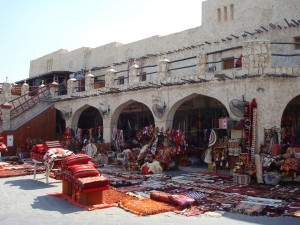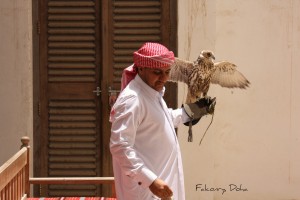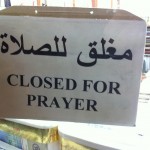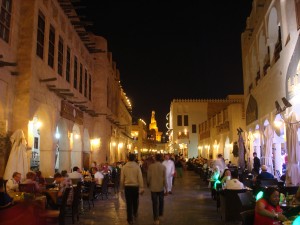Souq Waqif literally means “standing market”. It’s a market so shopping is the main activity here. If you are not from the Gulf region then everything here is enough to enchant you.
Shopping
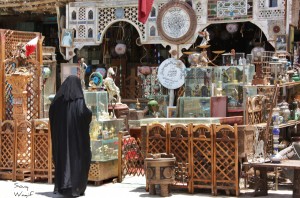
Explore different alleys to find more shops and stores that sell traditional goods, from daily necessities like spices to fabric, fashion, handicrafts and Shisha pipes. The souq is not very big, though if you think “I will come back later to get it.”, you may not be able to find it again.
There is also a bird market and various pet shops selling chicks, rabbits and all kinds of pets. (Read more)
Art Gallery

Souq Waqif Art Centre
The Souq Waqif Art Centre was opened in 2008. It started off with some small artistic shops and workshops offering art classes. But it was closed 2 years later when the rental contract was not renewed. In 2012, it was re-opened. And it does not only showcase local artists’ work but also holds exhibitions for global artists. The Art Centre now aims to preserve and inspire both local and Middle Eastern artists, and share ideas and knowledge with anyone who loves art and culture.
Al Markhiya Gallery
This oldest art gallery in Doha exhibits modern artworks from both local artists and the Gulf region. And it’s not far from the Souq Waqif Art Centre.
Festivals and Performances
Souq Waqif Spring Festival
Souq Waqif Spring Festival has become a recurring event each year. The 15-day festival scatters all over the Souq. There are shows at Al Rayyan Theatre, games and activities at the Games Village at Al Almed Square, circus, clowns and street performers at the souq alley and art workshops at the Souq Waqif Art Centre. Don’t forget the dolphin shows too. The festival is for everyone!
Monuments
Al Khoot Fort aka Doha Fort (museum)
Situated next to the Camel Souq and Souq Waqf, the Doha Fort has undergone multiple conversions throughout its lifetime. It was first built as a military barracks in 1880 under Ottoman occupation. It was then converted into a police station, a prison in 1906, a fort in 1927 and finally a museum in 1978. The museum now houses both traditional Qatari crafts like gold works, woodworks, history and Bedouin handicrafts together with military arms that were once used in the fort.
